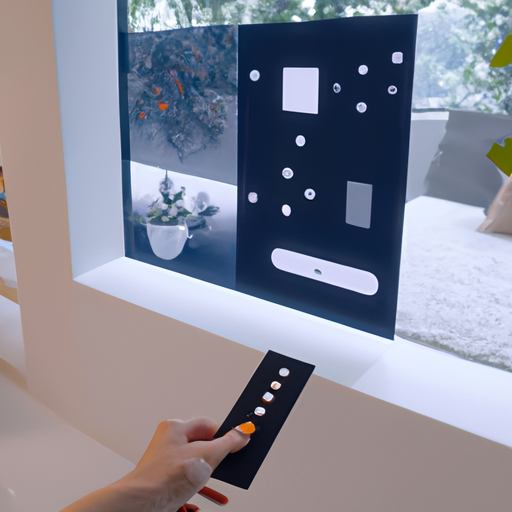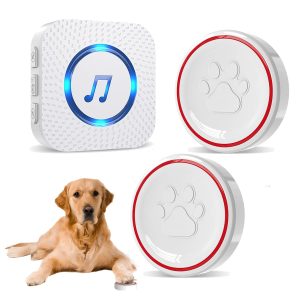

Affordable Smart Homes: Transforming Your Living Space at a Reasonable Price.
The Average Cost of Setting Up a Smart Home
The Average Cost of Setting Up a Smart Home
In recent years, smart home technology has become increasingly popular among homeowners. With the ability to control various aspects of your home through a smartphone or voice commands, it’s no wonder that many people are eager to embrace this new wave of convenience. However, one question that often arises is: how much does it cost to set up a smart home?
The cost of setting up a smart home can vary greatly depending on several factors. The first factor to consider is the size of your home. A larger home will typically require more devices and equipment to fully automate all areas. Additionally, the complexity of the automation you desire will also impact the cost. If you simply want to control your lights and thermostat, the cost will be lower compared to a more advanced system that includes security cameras, door locks, and even appliances.
Another factor that affects the cost is the brand and quality of the devices you choose. There are numerous brands in the market, each offering different features and price points. It’s important to do your research and compare prices to ensure you’re getting the best value for your money. While it may be tempting to opt for cheaper devices, keep in mind that quality and reliability are crucial when it comes to smart home technology.
To give you a rough estimate, the average cost of setting up a basic smart home can range from $1,000 to $3,000. This includes devices such as smart speakers, smart thermostats, and smart lighting. However, if you’re looking to incorporate more advanced features like security systems and smart appliances, the cost can easily exceed $5,000.
It’s worth noting that the initial setup cost is just the beginning. Smart home technology requires ongoing maintenance and updates to ensure everything runs smoothly. Additionally, there may be subscription fees for certain services, such as cloud storage for security camera footage. These recurring costs should be factored into your budget when considering the overall cost of a smart home.
While the cost of setting up a smart home may seem daunting, it’s important to consider the long-term benefits. Smart homes can help you save money on energy bills by optimizing your heating and cooling systems. They can also enhance your home security, giving you peace of mind when you’re away. Moreover, the convenience and comfort of controlling your home with a few taps on your smartphone are invaluable to many homeowners.
If you’re on a tight budget, it’s possible to start small and gradually expand your smart home system over time. Begin with the essentials, such as a smart thermostat and smart lighting, and then add more devices as your budget allows. This approach allows you to spread out the cost and prioritize the features that are most important to you.
In conclusion, the cost of setting up a smart home can vary depending on factors such as the size of your home, the complexity of the automation, and the quality of the devices you choose. While the initial setup cost can range from $1,000 to $3,000 for a basic system, incorporating more advanced features can easily exceed $5,000. However, the long-term benefits and convenience of a smart home make it a worthwhile investment for many homeowners. Whether you choose to start small or go all-in, the choice is ultimately yours.
Factors Affecting the Cost of a Smart Home Installation

The cost of a smart home installation can vary greatly depending on several factors. These factors can include the size of the home, the complexity of the desired features, the quality of the products used, and the level of professional assistance required. By understanding these factors, homeowners can better estimate the cost of turning their house into a smart home.
One of the primary factors that affect the cost of a smart home installation is the size of the home. Larger homes typically require more devices and equipment to fully automate and control various aspects of the house. This can include smart thermostats, lighting systems, security cameras, and audio/video distribution systems. The more devices needed, the higher the overall cost of the installation.
The complexity of the desired features is another important factor to consider. Some homeowners may only want basic smart home features, such as voice-controlled lighting or a smart thermostat. These features are generally more affordable and can be easily installed by the homeowner themselves. However, if a homeowner desires more advanced features, such as a fully integrated home automation system that controls everything from the lights to the security system, the cost will increase significantly. These advanced systems often require professional installation and programming, which adds to the overall cost.
The quality of the products used in a smart home installation can also impact the cost. There is a wide range of smart home devices available on the market, ranging from budget-friendly options to high-end, premium products. While budget-friendly options may be more affordable initially, they may not offer the same level of performance or longevity as their higher-priced counterparts. Investing in higher-quality products can result in a more reliable and durable smart home system, but it will also increase the overall cost.
Professional assistance is often required for a successful smart home installation, especially for more complex systems. Hiring a professional installer or integrator can ensure that the system is set up correctly and that all devices are properly connected and programmed. However, professional assistance comes at a cost. The fees for professional installation and programming can vary depending on the complexity of the system and the expertise of the installer. Homeowners should budget for these additional costs when considering a smart home installation.
In conclusion, the cost of a smart home installation is influenced by several factors. The size of the home, the complexity of the desired features, the quality of the products used, and the level of professional assistance required all play a role in determining the overall cost. Homeowners should carefully consider these factors and their budget before embarking on a smart home project. By doing so, they can ensure that they have a clear understanding of the potential costs involved and make informed decisions about the features and products they choose for their smart home.
Budget-Friendly Smart Home Solutions: Cost-Effective Options
Smart homes have become increasingly popular in recent years, offering homeowners a convenient and efficient way to control various aspects of their living space. However, one common concern that many people have is the cost associated with transforming their homes into smart homes. While it’s true that some smart home systems can be quite expensive, there are also budget-friendly options available for those who are looking to save money.
One cost-effective option for creating a smart home is to start small and gradually add more smart devices over time. This allows homeowners to spread out the cost of their smart home upgrades and make the transition more manageable. For example, instead of investing in a full smart home system all at once, homeowners can begin by purchasing a smart thermostat or smart lighting system. These devices can be relatively affordable and provide a great starting point for building a smart home.
Another way to save money when creating a smart home is to look for deals and discounts on smart devices. Many retailers offer sales and promotions on smart home products, especially during holiday seasons or special events. By keeping an eye out for these deals, homeowners can often find significant savings on the devices they need to make their homes smarter. Additionally, some utility companies offer rebates or incentives for installing energy-efficient smart devices, which can help offset the initial cost.
Choosing the right smart devices can also make a difference in the overall cost of creating a smart home. While some high-end smart devices may come with a hefty price tag, there are also more affordable options available that offer similar functionality. It’s important for homeowners to research different brands and models to find the best balance between cost and features. Reading reviews and comparing prices can help ensure that homeowners are getting the most value for their money.
In addition to the initial cost of purchasing smart devices, homeowners should also consider the long-term savings that can be achieved through a smart home. Many smart devices are designed to be energy-efficient, which can lead to lower utility bills over time. For example, a smart thermostat can learn a homeowner’s schedule and adjust the temperature accordingly, resulting in energy savings and reduced heating and cooling costs. These long-term savings can help offset the initial investment and make a smart home more affordable in the long run.
Lastly, homeowners should consider the potential for increased home value when investing in a smart home. As smart home technology becomes more mainstream, it is increasingly seen as a desirable feature in real estate. This means that adding smart devices to a home can potentially increase its resale value. While this may not directly impact the initial cost of creating a smart home, it is an important factor to consider when evaluating the overall value and affordability of a smart home.
In conclusion, creating a smart home doesn’t have to break the bank. By starting small, looking for deals, choosing cost-effective devices, and considering long-term savings and potential home value, homeowners can create a budget-friendly smart home that meets their needs and fits within their budget. With the right approach and careful planning, anyone can enjoy the convenience and efficiency of a smart home without spending a fortune.





